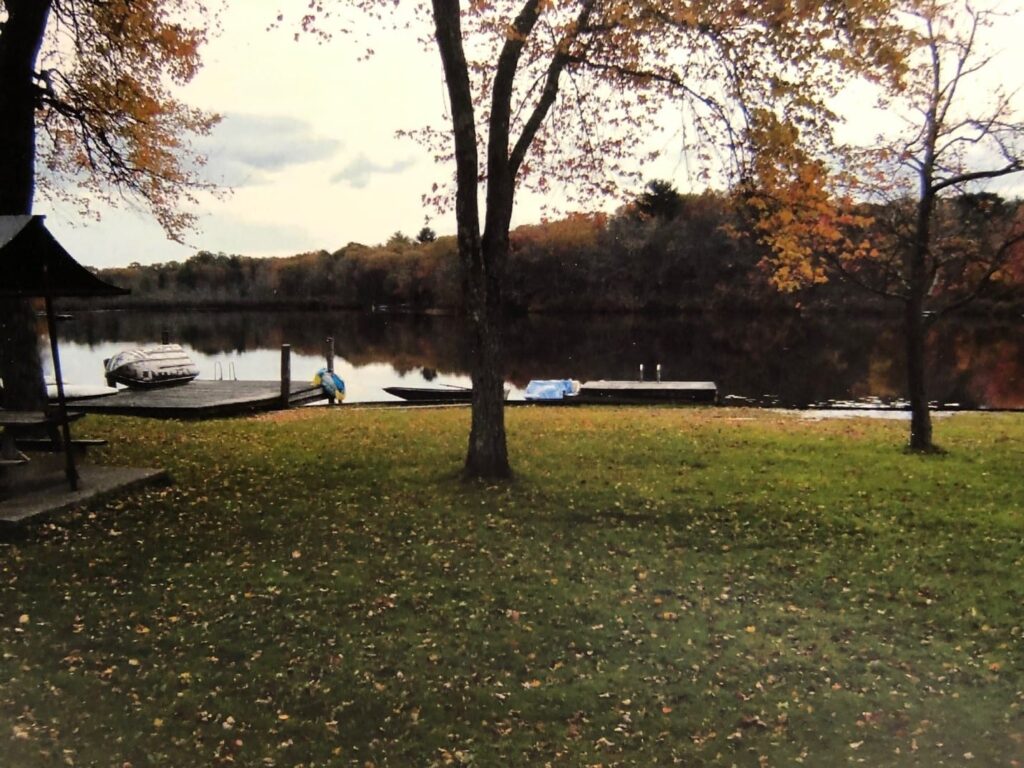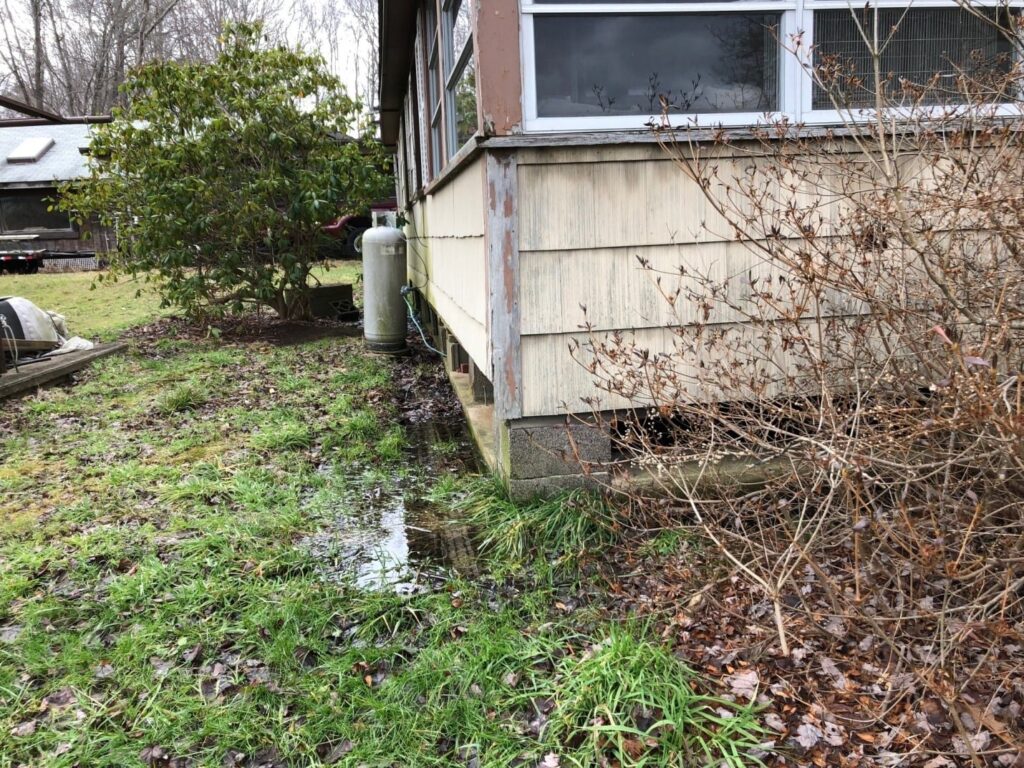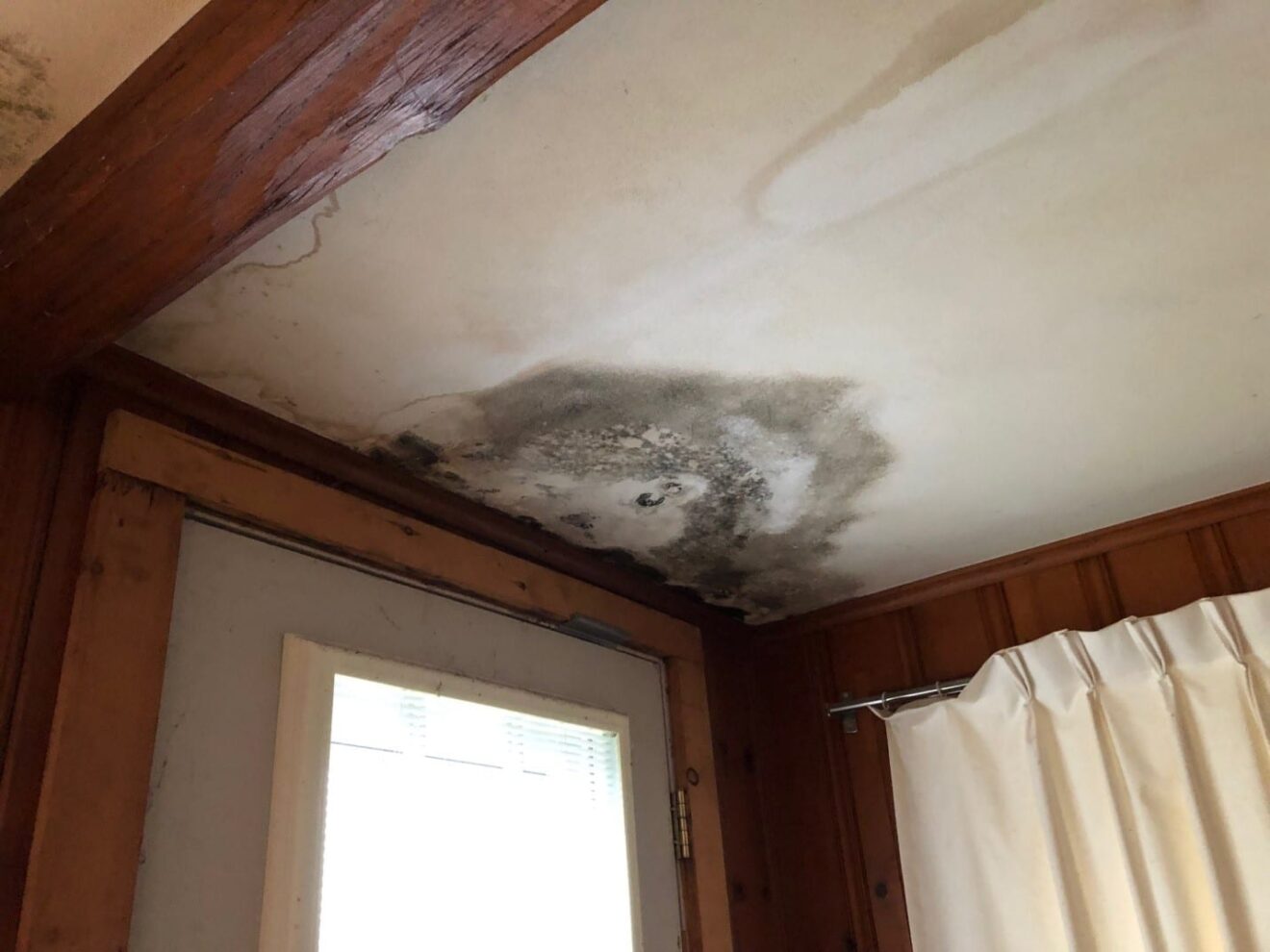OLD LYME — For more than a year David Berggren’s house has been sinking, and Black Hall Pond has been steadily rising due to beaver activity downstream, flooding his lawn, and dock, causing his plumbing to fail and mold to grow, and shifting the foundation underneath his home on Boughton Road.

“I’ve known about Mr. Berggren’s problems for a long time,” said Todd Machnik, who served as chair of the Flood and Erosion Board for the town of Old Lyme for 25 years before retiring on January 1. “I talked to Bonnie [Reemsnyder] when she was around and I went and talked to the state and they were a little helpful as far as getting permits for trapping beavers.”
In September, on Berggren’s behalf, Machnik was issued a special permit by the Department of Energy and Environmental Protection to trap beavers on town property.

“I trapped three beavers on town property near Whippoorwill Road,” said Robert Comtois, the trapper hired by the town, “but they may not have been the suspects. I did try to get back into the opposite bank of Black Hall Pond, but it was so thickly grown-in, I was having a tough time even with my kayak.”
Comtois and Machnik both said the beaver in question is on the Jericho Preserve owned by the Old Lyme Land Trust.
“I went out into the property and tracked where the dams were. The ones that are a problem are on land trust property,” Machnik said “All the residents there are good about clearing out dams, but I never approached the land trust. I just worked through Bonnie and she told me the town didn’t want to get involved in any of that because it was going to be really difficult.”

Despite the efforts of Machnik, town officials, members of the Open Space Commission and the Old Lyme Land Trust have for months denied knowing either location of the beaver activity responsible for flooding the property of Berggren and his neighbors, or ownership of the land.
“All we know is it’s not on our property,” said Amanda Blair at a December 13 meeting of Old Lyme’s Open Space Commission.
“To the best of our knowledge, there is no beaver dam located on the Jericho Preserve,” said Michael Kiernan, president of the Old Lyme Land Trust, in a December phone call with CT Examiner. “We worked with the DEEP expert in 2017 to determine this. At that time, it was determined that the dam was located on one of the private properties to the north of the preserve.”
Two years later, Berggren, Machnik, Comtois and several Black Hall Pond area residents maintain that the dam is clearly located downstream on Bucky Brook, deep in the Jericho Preserve.
Kiernan said an investigation is ongoing.
“We’re certainly willing to help,” said Kiernan Monday in response to news of the current situation. “Rest assured that if we determine the problem to be originating from the Jericho Preserve we will resolve it.”
On December 16, newly-elected First Selectman Tim Griswold said the town would look into using a drone to locate the beaver dam and to determine the responsibility for the flooding.
Two weeks into January, there has been no apparent progress toward resolving the issue.
In multiple conversations with town officials, it has been assumed that only the property owner may authorize the trapping or managing of beavers — in this instance, it appears, the Old Lyme Land Trust. According to both Machnik, and the Department of Energy and Environmental Protection, as a matter of law that is not the case.
“Any town, city or borough may require any private person or any firm or corporation to remove from any waterway or tidal water within the jurisdiction of such town, city or borough any debris, wreckage or other similar material for which such private person or firm or corporation is responsible and which prevents or may tend to prevent the free discharge of flood waters,” according to CT Gen Stat § 7-146 (2012).
In addition, in the event that a private owner cannot be contacted, the law grants a town the authority to remove an obstruction at the expense of the owner.

“When any such private person, firm or corporation fails to comply with such requirement within a reasonable time, Such legislative body shall have authority to remove or cause to be removed any such debris, wreckage or other similar material and to assess the cost of such removal against such private person or firm or corporation.”
The town of Old Lyme could either require the Old Lyme Land Trust to remove the dam or the town could remove the dam at land trust expense.
Machnik said that Reemsnyder, the former first selectman of Old Lyme, wasn’t willing to sign the necessary documents to trap beavers on the Old Lyme Land Trust property. Before leaving the board on January 1, Machnik had not discussed the sign-off with Griswold.
A cell phone message left for Reemsnyder on Monday has not yet been returned.
Previously reported by CT Examiner
- As Beavers Flood Properties Old Lyme Debates Need for Action (6/25/19)
- Letter: Reemsnyder Contacted Two Years Ago on Beaver Problem (7/1/19)
- Complaints on the Rise, DEEP Offers Guidance on Beavers (7/4/19)
- Life Among the Beavers in Southeast Connecticut (8/15/19)
- Editorial: Stepping up to Help a Neighbor (12/17/19)

